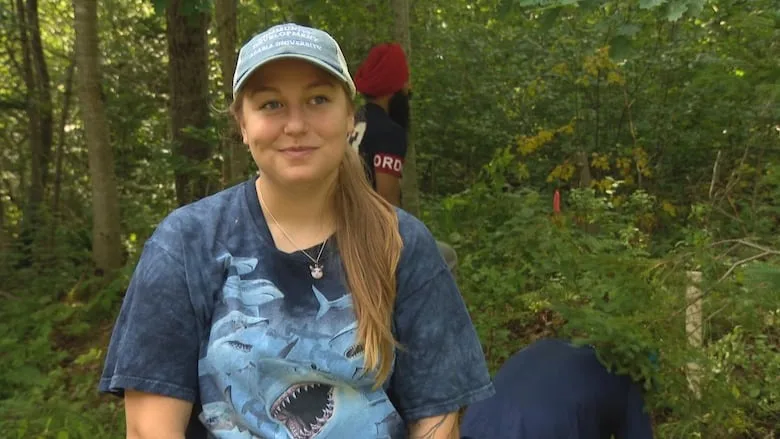
An invasive plants grow in this Wolfville park; this group is cutting its roots
While out for a run in Wolfville's Reservoir Park this past spring, Jenna Anderson came across a pile of brush on the side of the trail.
Having studied environmental science, she looked a little closer and recognized the shiny oval-shaped leaves within the debris.
It was glossy buckthorn, an invasive species introduced to Canada from Eurasia almost a century ago.
READ MORE: Ottawa announces toll cuts, fare freezes to boost Atlantic Canada travel
A singular plant can look unassuming, but buckthorns tend to grow in dense thickets, creating walls of vegetation that outcompete native plant species.
That's when Anderson realized how much of the park was overrun by the plants. Everywhere she looked, she saw them creeping up on the trails.
But she also saw David Steele, who was responsible for the pile of leaves and branches on the trail. He was getting his hands dirty and pulling the invasive plants up at the roots.
In that first meeting, Anderson learned Steele had been coming to the park three or four times a week to clear out invasive plants that threaten the local ecosystem. He had also enlisted the help of some volunteers.
"I said [to him], 'Hey, how do I get in on this? Let me be a part of this,'" she said. "So yeah, he put me in the schedule."

David Steele is leading a group of volunteers that removes invasive species from a beloved local park in Wolfville, N.S. (Daniel Jardine/CBC)
Steele first noticed Wolfville's invasive plant problem when Multiflora roses appeared in his backyard.
As a retired man with time on his hands, he said he began researching and soon saw invasive plants everywhere — including the park.
"I live just a few minutes from the park and it is one of my favourite areas for walks and just hiking … and I began to notice the uniformity of the vegetation along a lot of the trail sides," said Steele.
He started a removal group in the spring, which can clear thousands of plants in a day.
Still, the Blomidon Naturalist Society, a local organization, says there are up to 80 invasive plants within one square-metre of the park.
RELATED: 20 blue-green algae advisories issused for Alberta lakes this summer
Steele said they've encountered several invasive plants so far, including buckthorn, Multiflora roses and the Norway maple.
The group uses their bare hands, and tools like chainsaws and a root-pulling device called the extractigator, to remove the invasive plants.

Buckthorns, left, don't have natural predators, which is how they outcompete native species like chokecherry, right. (Daniel Jardine/CBC)
Steele said invasive plants disrupt the local ecosystem by outcompeting native species' for shade, space and food.
For example, native chokecherry leaves often show insect bites, while invasive buckthorn leaves do not because they have no natural predators.
This imbalance lets invasive species' replace native plants, harming the entire ecosystem.
"The invasive plants provide no food at all for the native insects that are the meat and potatoes of the food webs," said Steele.
As insect numbers drop, so will bird populations, triggering a ripple effect in the food chain, he said.

Volunteers use everything from their own hands to a chainsaw to remove the invasive plants. (Daniel Jardine/CBC)
While it's for a good cause, Anderson said the group is also a great opportunity for anyone who wants to spend some time outside this summer and meet others in their community.
"David's obviously like a wealth of knowledge, so it's really cool to chat with him while we're working," she said. "I've learned a lot."
In a statement to CBC News, Wolfville Mayor Jodi Mackay said the Reservoir Park is one of the town's "natural treasures, and it's up to all of us to help protect it."
Steele said the group's next step is to plant some more native species in the park.
This article, written by Giuliana Grillo de Lambarri, was originally publish for CBC News